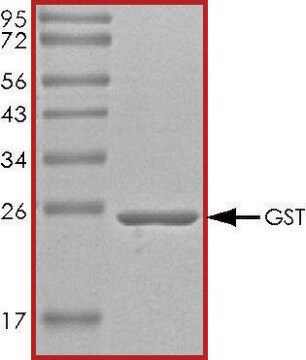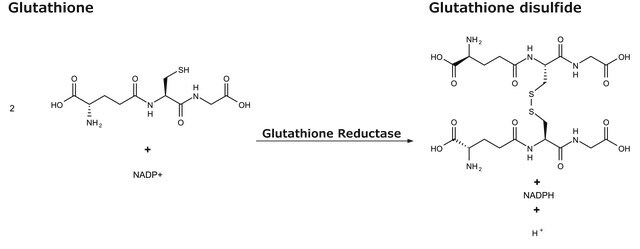G6511
Glutathione S-Transferase from equine liver
lyophilized powder, ≥25 units/mg protein
Sinónimos:
GST, Glutathione R-transferase, Glutathione S-alkenetransferase, Glutathione S-alkyltransferase, Glutathione S-aralkyltransferase, Glutathione S-aryltransferase, Glutathione S-epoxidetransferase
About This Item
Productos recomendados
biological source
equine liver
form
lyophilized powder
specific activity
≥25 units/mg protein
mol wt
45-50 kDa
composition
Protein, ≥60%
storage temp.
−20°C
General description
Biochem/physiol Actions
- as a constituent of Tris buffer for incubation of human umbilical vein endothelial cells (HUVEC) with atracurium to assess the proliferation of HUVEC in the presence of atracurium
- as a component of GSB stock solution to determine GSB (glutathione S-bimane) conjugate fluorescence intensity in intact Arabidopsis cells
- as an enzyme standard in spectrophotometric assay to determine the activity of GST
Unit Definition
Physical form
Analysis Note
Purified and assayed by a modification of the method of Simons and Vander Jagt.
Enzymatic activities are based on the conjugation of reduced glutathione with a second substrate. The individual proteins generally have activity with more than one class of substrate.
inhibitor
related product
signalword
Danger
hcodes
pcodes
Hazard Classifications
Resp. Sens. 1
Storage Class
11 - Combustible Solids
wgk_germany
WGK 1
flash_point_f
Not applicable
flash_point_c
Not applicable
ppe
Eyeshields, Gloves, type N95 (US)
Certificados de análisis (COA)
Busque Certificados de análisis (COA) introduciendo el número de lote del producto. Los números de lote se encuentran en la etiqueta del producto después de las palabras «Lot» o «Batch»
¿Ya tiene este producto?
Encuentre la documentación para los productos que ha comprado recientemente en la Biblioteca de documentos.
Los clientes también vieron
Nuestro equipo de científicos tiene experiencia en todas las áreas de investigación: Ciencias de la vida, Ciencia de los materiales, Síntesis química, Cromatografía, Analítica y muchas otras.
Póngase en contacto con el Servicio técnico







